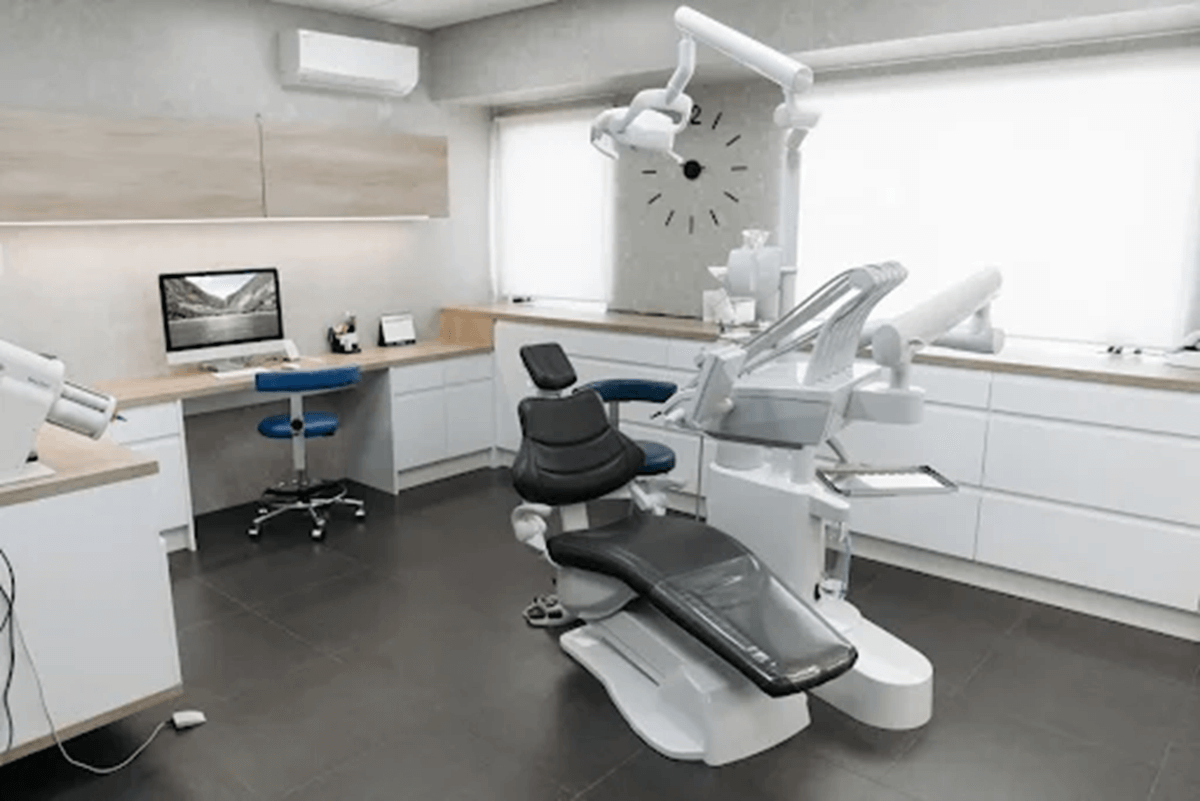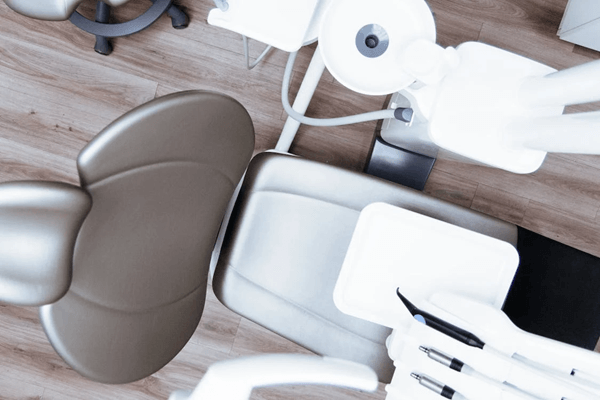
Expertise alone is insufficient for a successful dental practice. It is dependent on having the appropriate tools and equipment. For this, having a good dental office equipment checklist is important to ensure efficient patient care and office management. A list of dental equipment required for the efficient running of a dental office is crucial whether you are starting a new clinic or overhauling an existing one.
The following article gives a detailed explanation of how to go through all the processes that are required to create or improve your dental settings. You will find information on essential tools and equipment and tips on how to make the right purchase.
Comprehensive Dental Office Equipment Checklist
To ensure efficient operations and patient comfort, a dental office equipment checklist is required. Here’s the breakdown of this checklist to give you a proper view.
1. Quality Treatment Equipment for Patient Care
The best way through which you can ensure that your dental patients get the best care ever is by having reliable treatment equipment with you. The following are the 3 essential items that are instrumental in the effective running of the treatment process.
Dental Chairs
For the dentist and the patient, a comfortable dental chair is essential. While maintaining the patient’s comfort, it should be simple to adapt to various treatments. To meet the demands of the patient and the dentist, look for chairs that are long-lasting, simple to clean, and offer a variety of positioning possibilities.

Essential treatment setup featuring a high-tech dental chair.
Operatory Lights
Every dental operation is significantly impacted by adequate lighting. For optimal visibility, operator lights should be bright and movable. LED lights are frequently a wonderful option because they are more energy-efficient, last longer, and are simple to aim at the treatment region, guaranteeing comfort and accuracy.
Delivery Systems
During treatments, dental delivery systems keep everything within reach. Usually arranged for convenient access, these systems consist of trays, suction devices, and handpieces. A system that is well-organized guarantees that the necessary tools are always available and saves time.
2. Advanced Diagnostic Tools
In any dental clinic, intraoral scanners and X-ray machines are the cornerstones of all quality dental treatment.
X-ray Machines

X-ray machines are a necessary component of any dental office equipment list since they enable dentists to identify problems that are not apparent during a routine examination.
They can reveal cavities, infections, and even bone damage, allowing for faster and more accurate treatment. Digital X-rays are now common in many practices because they provide clear images with lower radiation levels and faster results.
Intraoral Scanners
Instead of using traditional molds, which can be uncomfortable for patients, an Intraoral Scanners captures precise images of a patient’s teeth and gums. These scanners are quick, comfortable, and create highly detailed digital impressions.
They’re especially useful for procedures like crowns and implants. Intraoral scanners improve both accuracy and efficiency, which is why they’re a valuable addition to any dental office equipment checklist.
3. Dental Office Sterilization Equipment to Ensure Patient Safety
In your dental office, you have to make sure that any equipment or surface that you come into contact with is clean and sterile so that no harm befalls any patient. Three significant equipment for this are autoclaves, disinfectant sprays, and instrument washers.
Autoclaves
Dental instruments have to be sterilized in an autoclave. It makes certain that all tools are safe for reuse by employing high-pressure steam to eliminate germs, viruses and fungi. Any list of equipment necessary for a dental clinic should begin with an autoclave. It’s essential to uphold infection control guidelines at your office.
Disinfectant Sprays
Cleaning high-touch surfaces such as seats, counters, and light handles requires disinfectant sprays. These sprays, an important part of dental office equipment, destroy germs and bacteria that may be left behind after each patient. When choosing a disinfectant, you can look for one that is efficient against a variety of infections while still being safe for dental surfaces.
Instrument Washers
Instruments should be properly cleaned using an instrument washer before autoclaving. These devices clean dental instruments by eliminating debris and grime. These machines enhance the general cleanliness of your clinic and save a ton of time.
4. Utility Equipment for Daily Operations
Air compressors and suction systems are two of the most essential dental office equipment at your workplace.
Air Compressors
Air compressors, a key part of dental office equipment, supply the pressure required by devices such as air syringes, handpieces, and drills. These tools wouldn’t function as well without a dependable air compressor. You can choose a compressor that provides steady airflow and is simple to maintain. Other choices include: The oil-free compressor is cheaper to maintain and does not cause contamination. This reduces the number of infections that can be contracted by either the patients or the staff that handles them.
Suction Mechanisms
Suction systems are used to remove excess fluids and debris during procedures. Some advanced suction systems include antimicrobial filters that reduce the risk of cross-contamination. They help keep the treatment area clean and clear, giving the dentist a better view of what’s being worked on. A strong suction system also makes patients more comfortable, as it keeps their mouths dry and free of fluids.
5. Digital Imaging Systems and CAD/CAM System
Contemporary digital image capturing systems are employed to capture images of patient’s teeth and the images are produced in high resolution at the same time. These are digital images that can be magnified and enlarged for further examination of the problem. Such systems include additional features such as 3D imaging which is very essential in cases like implant or orthodontic work. In addition, digital imaging is less hazardous than conventional imaging since radiation exposure is minimized by up to 80%.
CAD/CAM technology enables the fabrication of dental restorations including crowns, bridges, veneers, and dentures within the dental practice. This saves time as several appointments are not required. The software then creates the restoration after taking detailed 3D images of the patient’s teeth, while the CAM part fabricates it using high-tech milling machines or 3D printers. CAD/CAM milling bur is an important tool in this dental office equipment; it assists in contouring restorations for better fit and more long-lasting dental treatment.
6. Laboratory Equipment to Support In-House Procedures
Proper laboratory equipment is crucial to the effectiveness of the in-house activities that need to be performed. Some of the useful equipment includes centrifuges, microscopes, and autoclaves which can be used in preparing the materials and sterilizing the tools. This equipment allows tests and sample analysis, as well as preparation of dental materials to be done in the office.
Besides the basics, having specialist tools such as dental lathes or vibrators for casting will enable you to do your task better by providing higher accuracy of the shape and dimensions of the dental restoration sculptures. CPD-100 DLP 3D Printer are also being used to generate highly detailed models or surgical guidance directly from digital impressions in an effort to speed up the treatment planning and delivery.
Including this equipment on your list of necessary dental office equipment ensures faster turnaround times. It also improves the level of care you can deliver to your patients.
Factors to Consider When Choosing Dental Office Equipment
The following are the key factors that need to be checked when choosing dental office equipment.
- Durability and Quality: This is the first one that you must take care of. The tools that are built to last provide uninterrupted service.
- Functionality: While selecting your equipment, you also have to make sure that it meets your purpose and specific needs.
- Budget Management: Healthcare tools are quite expensive, so keep your budget in mind and make your purchase accordingly without overspending.
- Ease of Maintenance: To reduce downtime and to keep your operations efficient, pick equipment that is easy to clean.
Where to Buy Quality Dental Office Equipment?
You have three choices for where to get your dental office equipment.
1. Specialized Dental Vendors
Specialized dental vendors are the best solution for those who seek quality dental office equipment and materials for their work, which will also be unique and correspond to the dentist’s requirements. These vendors provide a wide range of equipment and instruments that are specifically developed for dental practices, to guarantee that all the equipment is of the highest quality.
Among specialized vendors, there is Aidite which is famous for its great range of products and great customer service. Aidite focuses on offering innovative dental solutions such as CAD/CAM systems, milling burs, and superior zirconia materials which are appreciated for their accuracy, sturdiness, and effectiveness.
2. Internet Retailers and Marketplaces
Online marketplaces and retailers provide a wide range of benefits including convenience, variety, and simple comparison buying. It also provides you the facility that you can compare the features of different products and even the pricing structure at the same time. However, if you find any issue in your after-sales process, like in maintenance or repairs, this option can leave you unsupported.
3. Dental Office Equipment for Secondhand Market
For startups and budget conscious clinics, this is the most preferable option. The benefits of this include lower prices for secondhand machinery, as they are used but still good enough to serve the dental purpose. It also provides access to top brands that would otherwise be too expensive to buy if you are just starting. However, the limited warranties, potential wear and tear, and possibly shorter lifespan of the dental tools are drawbacks of this option.
FAQs about Dental Office Equipment
1. What is the dental office’s primary equipment?
Dental chairs, X-ray machines, delivery systems, and autoclaves are among the main pieces of equipment.
2. How much does it typically cost to put up a comprehensive list of dental office equipment?
Dental office equipment costs might vary significantly. Depending on the size of the business and the equipment selected. Establishing a fully furnished dental practice typically costs between $150,000 and $500,000.
3. What are the parts of the dental unit and what are they used for?
Typical parts of the dental units consist of handpieces, scalers, and water-air syringes. Handpieces are used for drilling and polishing. To get rid of tartar and plaque, scalers are used. Whereas, water-air syringes are used for drying and during operations.
Conclusion
Equipping your dental clinic with the necessary instruments ensures that operations run smoothly and that patients receive excellent care. From creating a comprehensive dental office equipment list to establishing the cost of dental office equipment, meticulous planning, and informed selections are essential for success. Remember that maintaining equipment regularly is just as important as purchasing it to ensure its longevity and consistent performance in your practice.




